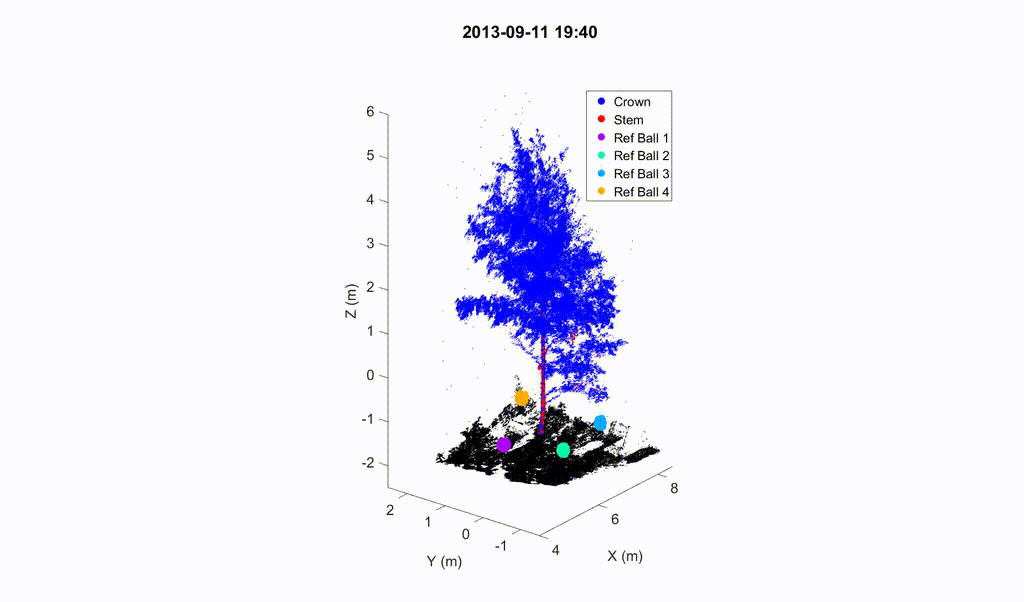Our novel Hyperspectral Terrestrial Laser Scanning (TLS) dataset has been published as open data.
The laser scanning point cloud dataset consists of 30 individual scans collected as a time series covering a 26 hour time frame. Each point in the laser scanning point cloud contains colour information from several different wavelengths. Ordinary laser scanning data has colour information from one wavelength.
Compared to traditional laser scanning data, hyperspectral data has advantages in for example target recognition and change detection, where it is possible to track changes of color of tree leaves, as in the data published. Also 3D RGB presentations can be produced from data without using separate camera. All laser scanners enable collecting data without external light source, also in the dark.
The dataset is available via the Etsin research data finding service provided by the Finnish Ministry of Education and Culture (http://urn.fi/urn:nbn:fi:csc-ida-4x201604052015015324658s). Datasets are provided in .laz format and published under the Creative Commons Attribution 4.0 International License (CC-BY-40).
The data has been utilised in recent research on movement of a birch during a 26 hour period, where it was found out that trees “sleep” during night. Click the picture below to see an animation on the movement of a tree:
More information: Dr. Eetu Puttonen, eetu.puttonen(a)nls.fi
Read more on the published data at the National Land Survey and about the sleeping trees at the NLS and TU Wien press releases


